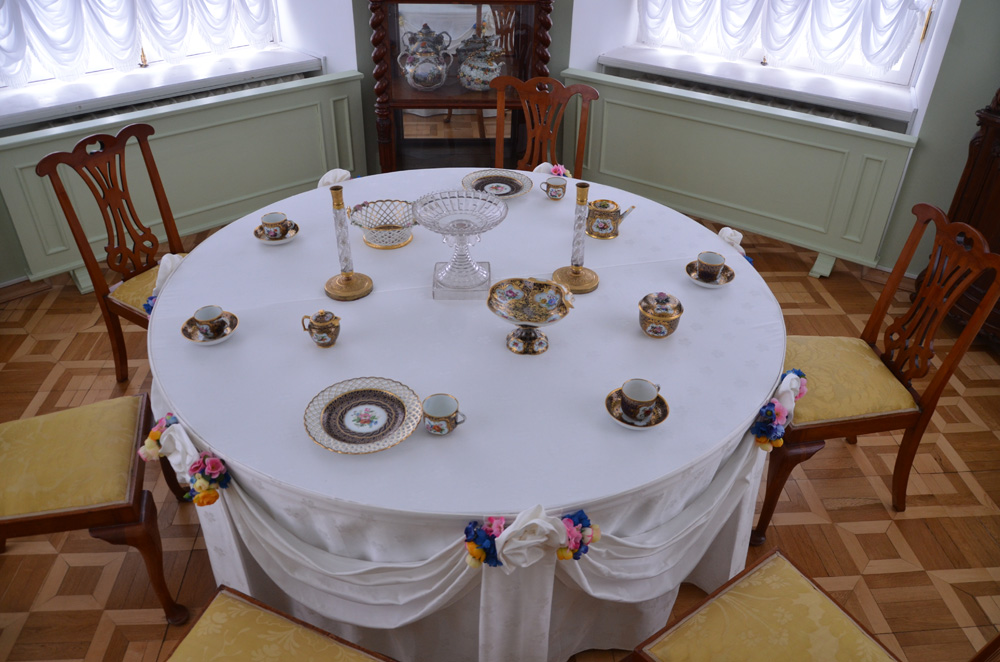DINING ROOM

Storerooms for tableware were an essential feature in the imperial palaces. Rules for setting tables for everyday meals and festivities were subject to strict regulations.
The display reproduces the appearance of the Dining Room in the age of Nickolas I as it appeared until 1941. The table is set with pieces from the Cobalt service, one of the best known sets in the Gatchina Palace. The Cobalt service was made at the Vienna Porcelain Manufactory and presented to the future emperor Paul I and Maria Feodorovna by emperor Joseph II of Austria. In the 19th century this tableware set was considerably enlarged at the Imperial Porcelain factory in St Petersburg.
In addition to tableware, the room is adorned with other porcelains (Saxony, Meissen Porcelain Manufactory, the second half of the 18th century) from the palace�s original collection.
See on interactive plan
Storerooms for tableware were an essential feature in the imperial palaces. Rules for setting tables for everyday meals and festivities were subject to strict regulations.
The display reproduces the appearance of the Dining Room in the age of Nickolas I as it appeared until 1941. The table is set with pieces from the Cobalt service, one of the best known sets in the Gatchina Palace. The Cobalt service was made at the Vienna Porcelain Manufactory and presented to the future emperor Paul I and Maria Feodorovna by emperor Joseph II of Austria. In the 19th century this tableware set was considerably enlarged at the Imperial Porcelain factory in St Petersburg.
In addition to tableware, the room is adorned with other porcelains (Saxony, Meissen Porcelain Manufactory, the second half of the 18th century) from the palace�s original collection.
See on interactive plan
